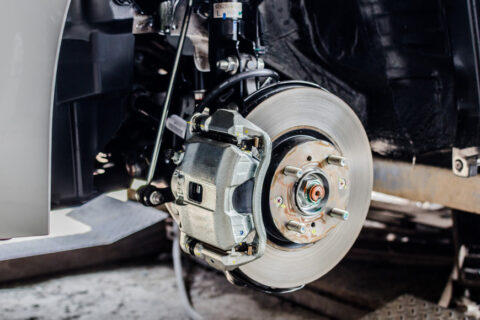How Your Car’s Brake System Works Your car’s brake system is made up of two key components: Hydraulic System – Transfers force from the brake pedal to the wheels. Friction Materials – Creates the necessary friction to stop your car.
BRAKE REPAIR
SERVICE OVERVIEW
What Happens When You Hit the Brake Pedal?
When you press the brake pedal, a series of mechanical and hydraulic actions take place to bring your car to a stop. Let’s break it down:
Hydraulic System
Master Cylinder – Converts pedal pressure into hydraulic pressure, sending brake fluid to the wheels.
Brake Lines & Hoses – These high-pressure tubes carry brake fluid to the brakes at each wheel.
Wheel Cylinders & Calipers – These hydraulic components apply pressure to the friction materials, which stop your car.
Friction Materials: The Stopping Power
Disc Brake Pads & Drum Brake Shoes – Made of heat-resistant materials, these components create the friction necessary to slow down your vehicle.
Types of Brakes
Disc Brakes (Common in Most Cars)
Main Components:
- Disc Brake Rotor – Attached to the wheel.
- Caliper & Brake Pads – The caliper holds the brake pads.
How It Works:
When you press the brake pedal, the master cylinder sends hydraulic pressure to the caliper. The caliper then clamps the brake pads against the rotor, creating friction to slow down or stop the car.
Drum Brakes (Often Found in Rear Wheels)
✅ Main Components:
- Brake Drum – Attached to the wheel.
- Wheel Cylinder, Brake Shoes & Springs – Work together to create friction.
✅ How It Works:
Hydraulic pressure pushes the brake shoes against the inside of the drum, slowing down the wheel.
Additional Brake Features
Parking Brake (Handbrake or Emergency Brake)
- Uses cables to mechanically engage the rear brakes.
- Prevents the car from rolling when parked.
Anti-Lock Braking System (ABS) – A Safety Feature
- Prevents wheel lock-up during sudden stops.
- Uses wheel-speed sensors and computer-controlled hydraulics to pulse the brakes on and off rapidly.
- Helps maintain traction and control in emergency braking situations.
📞 Call Now: 248-817-5370
📍 Visit Us: 2888 E. MAPLE RD, TROY, MI 48083

